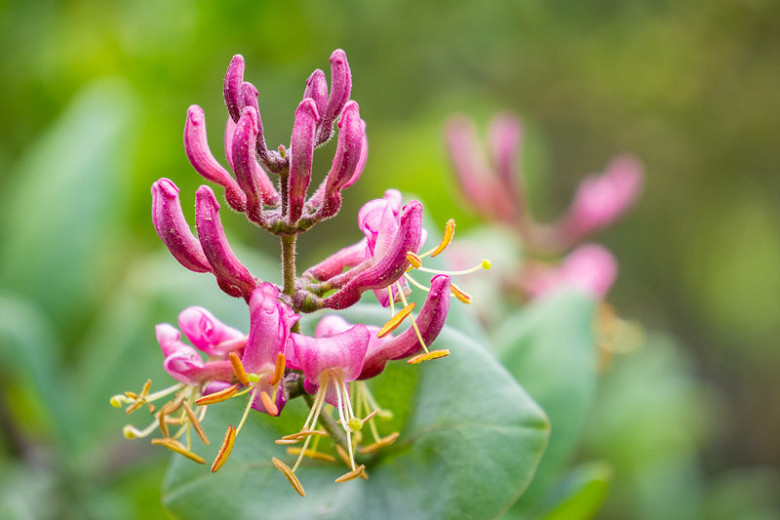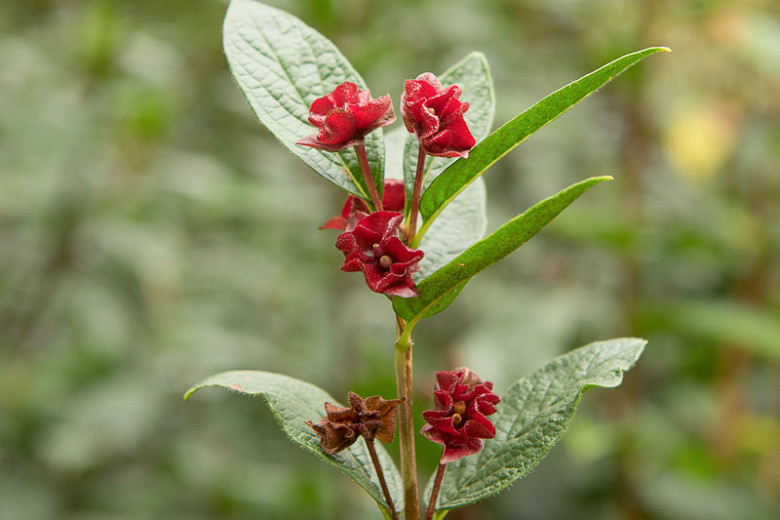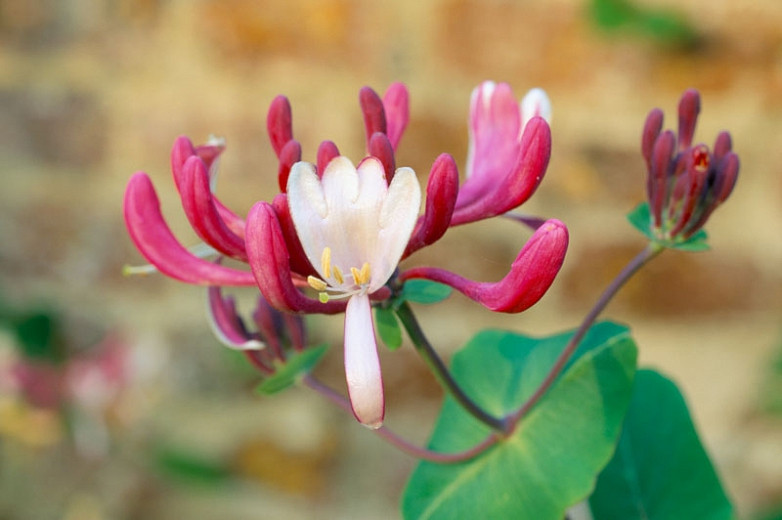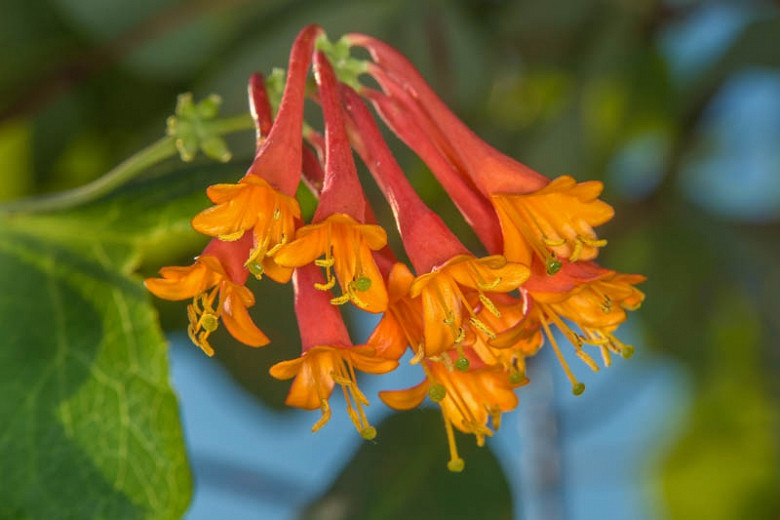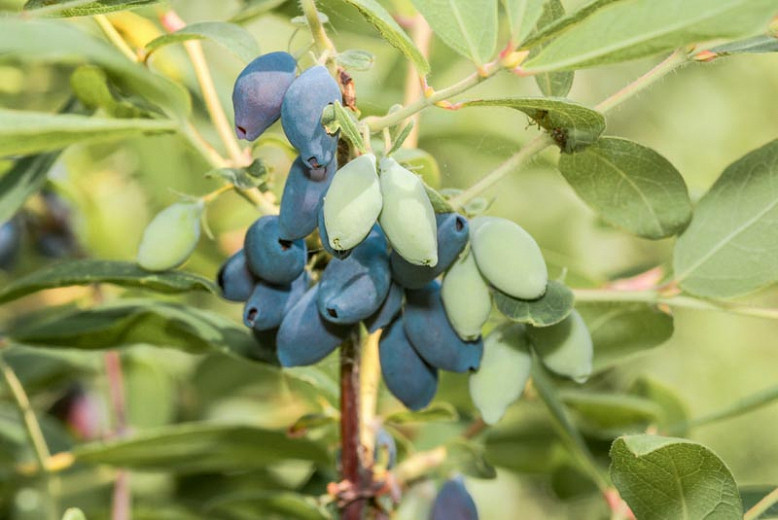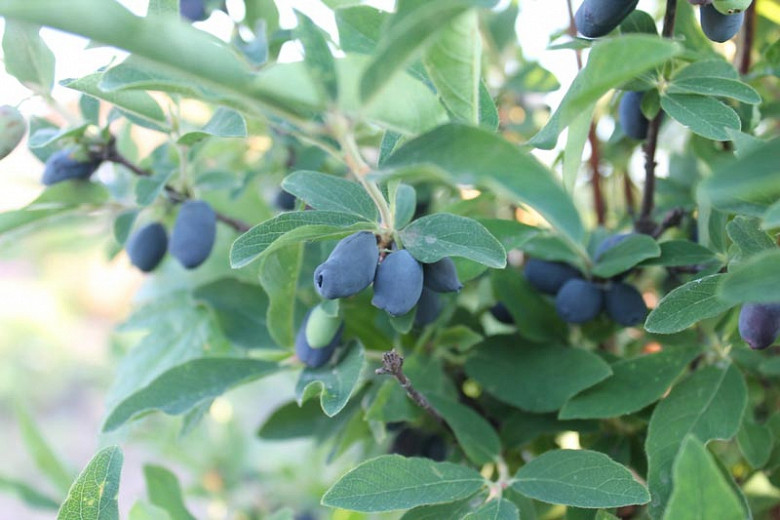Lonicera caerulea Sugar Mountain® Eisbär (Honeyberry)
Lonicera caerulea Sugar Mountain® Eisbär (Honeyberry) is a compact, deciduous shrub with attractive, gray-green leaves and small, funnel-shaped, slightly fragrant, white flowers in early spring. The blossoms give way to very large, up to 1.5 in. long (4 cm), dark blue berries which ripen in late spring or early summer. Similar to blueberries in taste and looks, they may be eaten directly off the bush or harvested for use in jams, pies or juices. Ideally honeyberries should be planted in pairs or groups, as this will increase the rate of pollination and fruit production. Sugar Mountain Blue variety is a good pollinator. Hand pollination is a good alternative since there is little pollinating insect activity in early spring: lightly brush over the flowers with a small, soft paint brush.
- Grows up to 5-6 ft. tall and wide (150-180 cm)
- A full sun to part shade lover, this plant is best grown in organically-rich, moist, well-drained soils. This honeyberry will take full sun in cool areas, but appreciate some afternoon shade in hotter areas. Provide consistent moisture in the early years. Some drought tolerance once established. Adapts to a wide range of soils, including acidic or alkaline soil – making it a great alternative for gardeners struggling to grow blueberries. A mulch of well-composted organic matter will help retain moisture.
- Excellent choice for fruit gardens, this plant may be used for hedges.
- Low maintenance, this plant is deer resistant and generally pest and disease free.
- Haskaps flower on old wood, so pruning should occur after harvest. Plants should not be pruned until they have been in the ground for at least three years. Cut back the tips of stems to encourage branching as lateral branches bear more fruit. Older plants (3 years in the ground) may be renewed by removing dead branches and weak stems in late winter. No more than 25% of the plant should be removed. For best fruit production plant more than one variety
- Plant in spring when there is no risk of frost. This will enable the plant to get establish over the following summer.
- Propagate by seed, hardwood cuttings or semi-ripe cuttings
Requirements
| Hardiness | 3 – 6 |
|---|---|
| Heat Zones | 6 |
| Climate Zones | 1, 1A, 1B, 2, 2A, 2B, 3, 3A, 3B, A1, A2, A3 |
| Plant Type | Shrubs |
| Plant Family | Lonicera – Honeysuckles |
| Exposure | Full Sun, Partial Sun |
| Season of Interest | Spring (Early,Late)Summer (Early) |
| Height | 5' – 6' (150cm – 180cm) |
| Spread | 5' – 6' (150cm – 180cm) |
| Spacing | 72″ (180cm) |
| Water Needs | Average |
| Maintenance | Low |
| Soil Type | Chalk, Clay, Loam, Sand |
| Soil pH | Acid, Alkaline, Neutral |
| Soil Drainage | Moist but Well-Drained |
| Characteristics | Fragrant, Showy, Fruit & Berries |
| Tolerance | Deer, Drought |
| Attracts | Birds |
| Garden Uses | Hedges and Screens |
| Garden Styles | Informal and Cottage |

